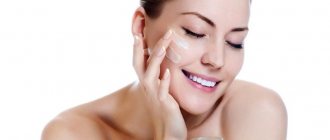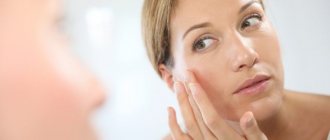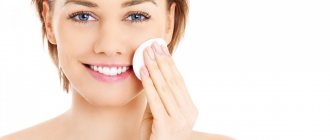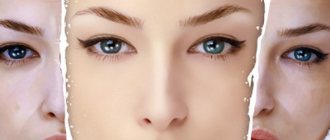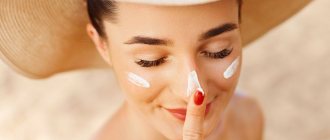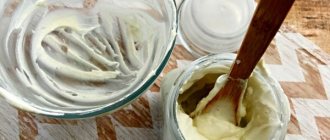Today, the world market offers a wide variety of cosmetics, in particular personal care products. Unfortunately, there is no single official classification of all products, so it is quite difficult to understand all the diversity, and most often you have to rely on your own intuition. Despite this, the entire range can be secretly divided according to purpose, features of action and effectiveness of use. Thus, we will highlight three, the most convenient groups: mass-market cosmetics, selective (premium and luxury) cosmetics and active (medicinal) cosmetics. Mass-market cosmetics are intended for general personal care, however, they do not contain biologically active substances with medicinal properties. Mass market cosmetics can be found both in pharmacies and on the shelves of any chain store. The main difference between selective cosmetics and mass-market cosmetics is the limited use, depending on skin type, hair, and age. You can purchase cosmetics of this type only in specialized cosmetic stores. Active cosmetics, in turn, contain biologically active substances and are used for the treatment and prevention of certain diseases.
It is quite difficult to understand all the diversity, and most often you have to rely on your own intuition.
Features of problem skin
Dermatologists often define oily skin type as problematic due to its high susceptibility to rashes (acne).
Main characteristics of the problem type:
- Enlarged (clogged) pores;
- Excessive secretion of sebum;
- Uneven relief, dull complexion;
- Oily shine on the face;
- Predisposition to acne;
- Post-acne (stagnant spots).
Sebum protects the skin from dehydration and aggressive environmental factors, being the basis of the natural protective hydrolipidic mantle of the epidermis. However, excessive activity of the sebaceous glands is fraught with troubles in the form of rashes and inflammations: comedones, acne.
The level of oily skin is influenced by factors such as hormonal changes (during adolescence, during pregnancy, menstrual periods or due to taking certain medications), stress (excess of the stress hormone - cortisol - almost always affects the condition of the skin), bad habits (smoking, alcohol abuse), unbalanced diet, non-compliance with drinking regime, improper care.
Improper care for problem skin: TOP 3 mistakes
Let's look at the main mistakes that people with oily problem skin types make in their care routine:
Error #1
Due to overactivity of the sebaceous glands and excessive oily shine on the face, many try to cleanse the skin “squeaky clean” using harsh cleansers (soaps, scrubs) and alcohol-containing formulas of tonics or lotions. Excessively thorough cleansing disrupts the hydrolipid mantle of the skin, and aggressive components in cleansing cosmetics dry out the epidermis and disrupt its pH. The skin becomes defenseless against external aggressive factors, bacteria and, trying to compensate for the moisture deficit, produces even more sebum - this increases the risk of new inflammations.
Mistake #2
In an attempt to avoid oily shine on the face during the day, owners of problematic skin often neglect day cream with moisturizing formulas. By ignoring the moisturizing step, you contribute to the thickening of the stratum corneum of the epidermis, further clogging of pores and recurrence of acne.
Mistake #3
Incorrectly selected cosmetics for your skin type: dense, thick, nourishing textures will aggravate the condition of the problem type: they create a dense film on the skin, which contributes to clogging of pores and the appearance of new rashes. A cream with hydrofixing agents at the base of the formula is an indispensable assistant in the care of problem skin, and it is recommended to refrain from greasy oil textures and compositions - such care is preferable for dry skin.
Causes of comedones
And so, comedones. Considering these formations from a medical point of view, we find such information. This is a type of cyst that is formed due to blockage of the mouth of the hair follicle. The process involves keratinized epithelial particles mixed with sebum.
Among the reasons for the appearance of comedones are:
- genetic predisposition. That is, education can be “passed on by inheritance”, regardless of gender;
- hormonal imbalances. This phenomenon is often noted during adolescence and pregnancy;
- nervous disorders. These are frequent stresses, psychological overloads, leading to malfunctions of the entire system;
- chronic diseases of internal organs;
- endocrine pathologies;
- nutrition – eating large amounts of fatty foods, baked goods, sweets;
- bad habits (smoking, drinking alcohol);
- excessive exposure to solar radiation - intense tanning in summer, visiting a solarium in the cold season;
- inappropriate or low-quality cosmetics. Products containing vegetable oils can clog pores.
In some sources you can find a mention that comedones are non-inflammatory acne. This is not entirely true. The skin may be speckled with whiteheads and blackheads. Black ones are open and can be easily removed to the surface. White ones are closed. This area is often inflamed.
What should be a good cream for problem skin?
The oily type will not necessarily be problematic: with a well-chosen comprehensive routine, the condition of the epidermis can be kept under control. Choose non-comedogenic cosmetics labeled “for problem skin,” with light moisturizing and mattifying formulas. What factors influence the effectiveness of a cream for problem skin?
Moisturizing problematic skin
Dehydrated, oily skin reacts with increased sebum secretion. With a lack of moisture, the hydrolipidic protective film of the skin is disrupted, which the epidermis tries to naturally restore by releasing excess sebum. Regular moisturizing will prevent damage to the lipid mantle and protect the skin from dehydration and delay the aging process.
Regenerating and antibacterial properties
To combat the causative agent of acne - the bacterium Propionibacterium acnes - choose formulas with antibacterial components that normalize skin microflora. Formulas with soothing and restorative ingredients will help relieve sensitivity, redness and inflammation, as well as normalize pH and accelerate cell regeneration.
Matting effect
For excessive oily skin and enlarged pores, choose sebum-regulating formulas with absorbents that control sebum secretion, tighten pores and eliminate oily shine on the face.
Light and non-comedogenic composition
To prevent the cream from clogging pores, choose light textures of care products, for example, gels, emulsions, fluids, serums.
Clinical Trials
This term means that the product has been tested for safety and effectiveness according to strict scientific standards.
Promises that the cream smooths out wrinkles and that mascara lasts 30% longer than popular analogues are confirmed by laboratory tests. Although no one can say with one hundred percent certainty that the results of such studies are always honest and guard consumer interests, the “clinically tested” mark on the packaging most often indicates the high quality of the product.
How to find out if clinical trials have been conducted
Detailed information about clinical trials can be found on the company's website or on the information insert in the packaging of the product.
Who needs clinically tested cosmetics?
For those who believe in science and want at least some guarantees that the product will have the effect promised by the manufacturer.
How to choose a cream for problem skin?
To care for oily skin, choose products whose formulas contain:
- Mattifying substances that absorb sebum, keeping the skin matte.
- Sebum-regulating components that control the activity of the sebaceous glands and reduce the greasy shine of the face.
- Anti-inflammatory, soothing components to combat possible rashes.
- SPF filters to protect the epidermis from ultraviolet radiation, dehydration and photoaging.
- Hygroscopic components that prevent dehydration of the skin and prevent hyperkeratosis (thickening of the stratum corneum), clogged pores and improve complexion.
List of ingredients to look out for:
- Zinc regulates sebum production and has an antibacterial effect.
- Absorbents (silicon, perlite, kaolin) mattify the skin and deeply cleanse it of excess oil and impurities.
- Niacinamide (vitamin B3) soothes and relieves irritation, improves blood microcirculation.
- Hydroxy acids such as lipohydroxy acid (LHA) and salicylic acid stimulate skin renewal, even out skin texture and prevent clogged pores.
- Linoleic acid provides targeted exfoliation of dead cells and also prevents follicle clogging.
oils
The list of non-comedogenic oils is headed by a representative of the zero index and a high percentage of linoleic acid - safflower, which is considered ideal for problem skin.
The second place rightfully goes to primrose oil - it has the second level, and the content of linoleic acid is almost the same. It can treat acne caused by increased hormonal levels.
In third place is grape seed oil, which also has the second level of comedogenicity. There is less linoleic acid in it than in the previous one, but only by 4 percent.
Fourth place was taken by sunflower oil, accessible to everyone, for its zero level of comedogenicity and almost seventy percent linoleic acid. This is a good non-comedogenic oil for oily skin. Some consider it very similar to safflower.
Rating of the best pharmacy products for problem skin La Roche-Posay
Pharmacy creams are carefully monitored under the supervision of dermatologists, so they are more preferable for caring for problem skin. Such products contain active components in high concentrations, which make it possible to comprehensively combat the problem of rashes.
Effaclar range products
from La Roche-Posay for oily problem skin prone to acne, normalize sebum production, eliminate inflammatory elements, tighten pores and mattify. With an integrated approach, there is an improvement in the condition of problem skin, elimination of excessive shine and reduction of visual imperfections.
Corrective cream-gel for problem skin against imperfections Effaclar DUO (+)
EFFACLAR DUO(+)
Corrective cream-gel
By adding the components Aqua Posae Filiformis and Mannose to the formula, the cream restores the microflora of the epidermis, which helps reduce the number of inflammations that appear. Prevents the appearance of residual marks from imperfections (post-acne).
RUB 1,187 more details
Moisturizing daytime tinting cream-gel Effaclar Duo (+) Unifant
EFFACLAR DUO(+) UNIFANT
Corrective toning cream-gel
Instantly evens out skin tone, reduces pronounced imperfections, corrects and prevents the appearance of post-acne, and reduces sebum production. Contains glycerin, salicylic and linoleic acids, zinc.
RUB 1,489 more details
Moisturizing mattifying sebum-regulating emulsion Effaclar Mat
EFFACLAR MAT
Sebum-regulating emulsion
A product with La Roche-Posay thermal water, glycerin, zinc, perlite and the sebum-regulating component Sebulyse, mattifies the skin, eliminates excess oily shine on the face for 8 hours, tightens pores and moisturizes well.
RUB 1,618 more details
Regenerating product for dry problem skin Effaclar N
EFFACLAR H
Multi-restorative agent
Rich formula (MP lipids, shea butter, niacinamide, vitamin E, squalene, ceramides, La Roche-Posay thermal water) moisturizes oily skin, restores the hydrolipid mantle, and soothes irritation.
RUB 1,458 more details
Types of natural oils
In cosmetology and the medical industry, essential and fatty oils are distinguished. The latter are divided into active and basic. They may have the same names, so it is very important to know how to obtain them. Essential oils are obtained not by extraction, but by distillation. They are used drop by drop, limited to aromatherapy. You can, however, add them to others in a ratio of 1:30, that is, for one drop of essential oil – thirty drops of base oil.
The characteristics of active oils are reflected in their name. They react and contain many vitamins and other substances. They are mixed with the base ones for use, because without this they can ruin the skin.
Base oils are not dangerous to use. They are similar to the natural secretion of the skin of a healthy person and are the basis of cosmetic products. They are obtained by pressing and mixed with each other, which in no case should be done for active oils. Basic non-comedogenic facial oils that are well suited for oily skin are hemp or rosehip seed.
It should be noted that there is another division: refined and unrefined. For care, it is better to choose purified, refined ones, since in this case the risk of allergies is minimized.
Rules for comprehensive care for problem skin
Oily skin can be brought under control with a comprehensive beauty routine.
Remember the need for each of the stages of basic care for oily skin:
- Twice a day (morning and evening) wash your face with delicate cleansers (foams, milk) with a neutral pH and hypoallergenic formulas that do not contain surfactants (surfactants that disrupt the hydrolipidic protection of the epidermis).
- After washing, use a tonic with the ability to retain moisture in the cells of the epidermis - the tonic will even out the skin texture, visually tighten the pores and prepare the face for the application of gel or fluid.
- The final stage of the care routine is the application of a base cream intended for oily and problem skin: the day cream moisturizes, mattifies and protects the skin from ultraviolet radiation, the night cream exfoliates dead skin particles of the epidermis, evens out the tone and texture of the skin, and improves complexion.
- Once a week, use exfoliant products with soft abrasive particles to exfoliate dead skin cells, reduce flaking and better penetrate the active ingredients of your cream.
- Once or twice a week, use mineral detox masks with clay or charcoal, which deeply cleanse and tighten pores, prevent inflammation and also help reduce sebum production.
- Avoid using products containing acids, parabens and alcohol.
- It is also important to remember the need for daily protection from direct sunlight: ultraviolet radiation promotes accelerated photoaging and evaporation of moisture from cells, irritates the epidermis and reduces its immunity. Dermatologists recommend using products with a sun protection factor of at least SPF 30 even in cloudy weather.
Comedogenicity index
Some oils presented in the table give an idea of the composition of cosmetics containing them and allow you to choose the appropriate product based on the comedogenicity index.
| Comedogenicity level | Recommendations | The product's name |
| 0 | For all | Hemp, sunflower, argan |
| 1 | For everyone except oily skin | Castor |
| 2 | For dry and normal | Almond, grape seed |
| 3 | The same | Soybean, cotton |
| 4 | For dry | Coconut, palm, flax |
| 5 | Requires dilution | Wheat germ |
If a product ranks first or second in this table, then it is considered non-comedogenic. Wheat germ oil was considered the most dangerous, scoring 5 points.
Rules of application
To bring maximum benefit to problem skin, you need to choose and use a neutral, non-comedogenic cream correctly. The skin is always first cleaned using a special product, then wiped with lotion and tonic. Stoppromlem salicylic lotion may be ideal. You can apply the cream only after such preparation.
The cream should be rubbed in with gentle massaging movements, without excessive pressure.
https://www.youtube.com/watch?v=https:accounts.google.comServiceLogin
Do not apply too thick a layer of the product - this will not increase the effectiveness, and side effects may develop. If you have a tendency to allergies, first conduct an individual tolerance test - if you have the slightest suspicion, look for another option.
Based on Consumer Trials
Ads often make big claims like “This shampoo doubles hair volume,” accompanied by a small print at the bottom of the screen or page that says, “Based on consumer testing.” More honest manufacturers indicate that 231 women used the product for two weeks and the majority noted a 2-fold increase in hair volume.
Consumer test - providing a product to users to try. This allows manufacturers to assess the potential success of the product and collect feedback on it. Test results are based on subjective perceptions of products and not on scientific evidence.
How to Tell if a Consumer Test Was Conducted
This is purely a marketing ploy, so it is hardly worth looking for such information specifically. However, the manufacturer simply won’t let you miss it: this data will be in advertising, on the website, on the packaging.
